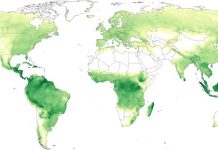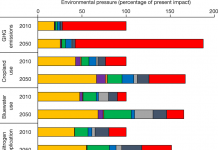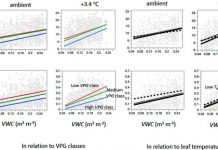【用固氮细菌产生甲烷】Kathryn R. Fixen et al. Light-driven carbon dioxide reduction to methane by nitrogenase in a photosynthetic bacterium. PNAS 2016 doi: 10.1073-pnas.1611043113
科研人员报告了光合细菌沼泽红假单胞菌(Rhodopseudomonas palustris)的一种改造过的菌株,它使用一种改型的固氮酶变种——固氮酶把氮气转化为氨——从而使用光能把二氧化碳还原为甲烷,这证明了使用光能细菌在单步酶催化过程中利用二氧化碳产生富含能量的烃的可行性。
Abstract
Nitrogenase is an ATP-requiring enzyme capable of carrying out multielectron reductions of inert molecules. A purified remodeled nitrogenase containing two amino acid substitutions near the site of its FeMo cofactor was recently described as having the capacity to reduce carbon dioxide (CO2) to methane (CH4). Here we developed the anoxygenic phototroph Rhodopseudomonas palustris as a biocatalyst capable of light-driven CO2 reduction to CH4 in vivo using this remodeled nitrogenase. Conversion of CO2 to CH4 by R. palustris required constitutive expression of nitrogenase which was achieved by using a variant of the transcription factor NifA that is able to activate expression of nitrogenase under all growth conditions. Also light was required for generation of ATP by cyclic photophosphorylation. CH4 production by R. palustris could be controlled by manipulating the distribution of electrons and energy available to nitrogenase. This work shows the feasibility of using microbes to generate hydrocarbons from CO2 in one enzymatic step using light energy.
【陆地、淡水生态系统N循环与气候变化】T. L. Greaver et al. Key ecological responses to nitrogen are altered by climate change. Nature Climate Change 2016 6: 836-843
Abstract
Climate change and anthropogenic nitrogen deposition are both important ecological threats. Evaluating their cumulative effects provides a more holistic view of ecosystem vulnerability to human activities which would better inform policy decisions aimed to protect the sustainability of ecosystems. Our knowledge of the cumulative effects of these stressors is growing but we lack an integrated understanding. In this Review we describe how climate change alters key processes in terrestrial and freshwater ecosystems related to nitrogen cycling and availability and the response of ecosystems to nitrogen addition in terms of carbon cycling acidification and biodiversity.







